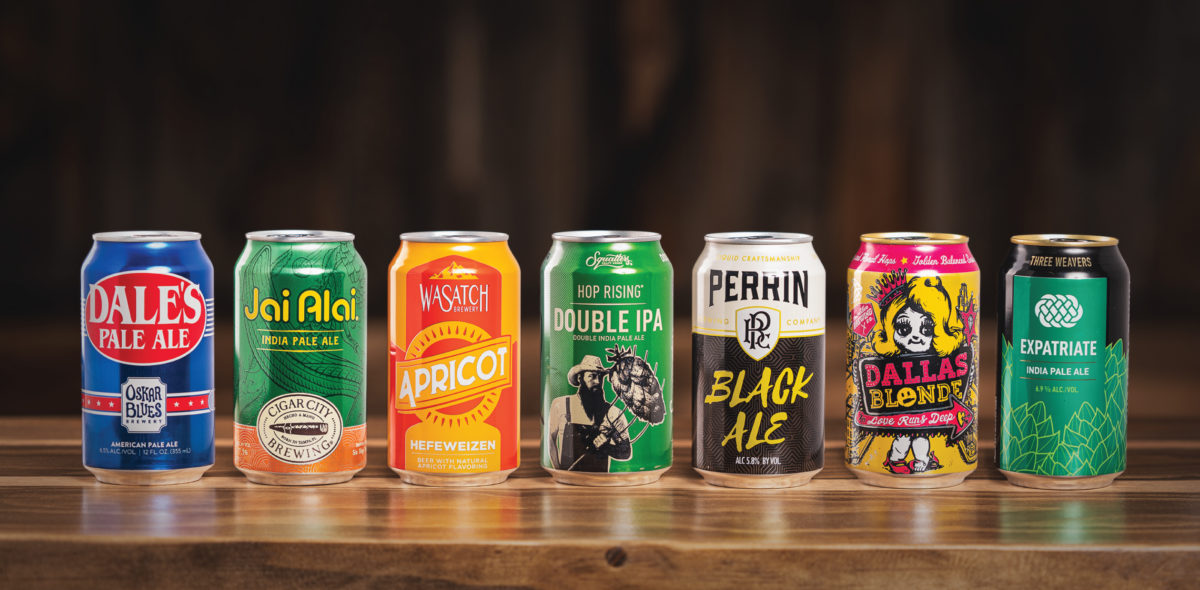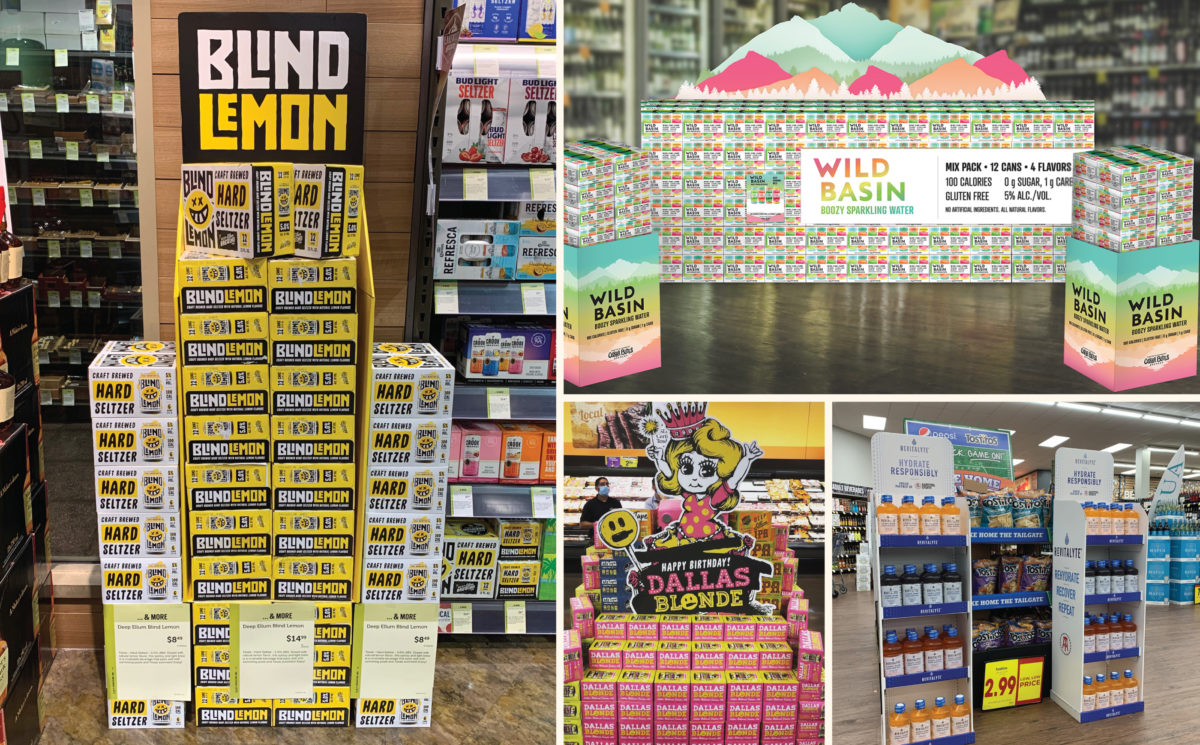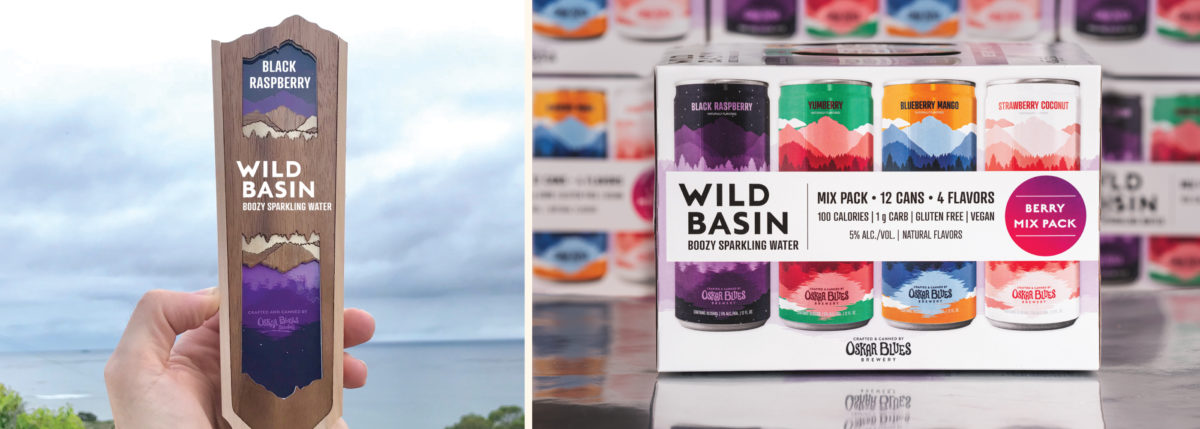Resources
In-house with CANarchy
Marketing vs. Sales and High Impact Point of Sales Tools
CANarchy Craft Brewery Collective is a rollup of six unique breweries under one corporate umbrella. These brands, including Oskar Blues, Cigar City, Perrin, Wasatch, Squatters, Deep Ellum, and recovery drink Revitalyte combine to create the 6th largest brewing company in the United States.
This structure allows for huge economies of scale through marketing, packaging and distribution channels. But it can also pose some complex brand decisions whenever a new product rolls out. How do you position it? How do all these brand play together? How does it relate to (if at all) the other breweries or parent brand itself?
For today’s In-house conversation, we sat down with Nick Bartelme, Marketing Manager at CANarchy, to discuss the differences between marketing and sales as well as some of the finer points of Point of Sale (POS) work—something we’ve found to be a blindspot for many breweries. And beyond theory, how do we put these concepts into action in the real world with engaging POS tools in both on- and off-premise so that you can sell more beer?
Let’s dive in and learn some quick ways your brewery can step up its game on these fronts.


Hi Nick. Please introduce yourself and tell the readers what you do at CANarchy Craft Brewery Collective.
 Nick
Nick
Thanks for having me. My official title is Marketing Manager, but my role has changed a lot over the two years I’ve been part of the collective. My main focus is managing Point of Sale from procurement, to sales support, to e-commerce. When we begin to emerge from the pandemic, I’ll resume working on large industry events like Great American Beer Festival and Craft Brewers Conference. Additionally, I support market research and consumer insights.

Most of our readers are in the beer industry, but for those outside who might not know, can you tell us about the CANarchy Craft Brewery Collective?
 Nick
Nick
CANarchy is a collective of craft breweries including Oskar Blues Brewery, Cigar City Brewing, Squatters Craft Beers, Wasatch Brewery, Deep Ellum Brewing Company, Perrin Brewing Company, and recovery beverage company Revitalyte. On top of that we have, at last time I checked, 16 pubs and taprooms around the country and eight manufacturing locations. It’s a pretty big and diverse beast.

What does a Marketing Manager do?
 Nick
Nick
A lot! I’m always surprised by what’s next. For me, I’m more of an operations-focused marketer who works with the creatives, but also closely with our sales team, wholesalers, and logistics folks. I consider myself more of a ‘phone calls and spreadsheets’ marketer rather than a ‘colors and words’ marketer. However, I do work alongside some great folks who do just that really well.

Can you give us a rundown of the CANarchy creative team. How many designers, marketers, social media folks keep everything running at the corporate level?
 Nick
Nick
At the CANarchy level we have five: an all-purpose marketing project manager (that’s me), a director of digital marketing, a PR manager, and a digital creative director. But to put that into context, each CANarchy brewery has its own marketing team on the ground that executes their day-to-day. At the CANarchy level, we support at 10,000 ft to jump in when needed, but the individual breweries drive.


Is there any intermingling between the various CANarchy brands at an off-premise marketing level (e.g. POS in liquor store advertising multiple brands, or a variety pack with several different breweries).
 Nick
Nick
A few instances. The big one is the CANarchy Mixed Pack which features IPAs from Oskar Blues, Cigar City, Deep Ellum, and Three Weavers. It’s a cross-country beer tour. Oskar Blues and Cigar City are easy to get everywhere, but Three Weavers and Deep Ellum distribute on a smaller scale in California and Texas, respectively. So a drinker in Florida who loves Cigar City’s Jai Alai can pick up a pack and have a great experience trying these two brands with which they might not be familiar. In a perfect world he or she ends up taking a trip to Los Angeles or Dallas at some point in the future and they remember, “I gotta stop by that brewery I tried in the mixed pack.”

Where do you draw the line between marketing and sales? What is the role of each service and how do they differ?
 Nick
Nick
It’s always a challenge defining that relationship. Marketing and sales think they are very different: marketing wants all the time in the world to make the perfect plan, while on the other hand sales is motivated and competitive to get their products to market and beat the competition. But in reality, they complement each other’s skills and differences. I’ve always joked that I have the best job in the company because I get to have one foot in the marketing team, and the other foot directly supporting the sales team. It’s a fun challenge. I’ve learned a lot.

Give me a run down on the types of Point of Sale components you commonly create for CANarchy brands.
 Nick
Nick
Point of Sale items run the gamut from those high-ticket items like retail displays, and signage like LEDs, to more affordable and high-volume things like tap handles, coasters, shelf talkers, and bottle openers for servers. Whatever our sales team needs to get cans in hands, we support it. Tap handles, to me, can be pieces of art: Oskar Blues innovated craft beer in a can and for years their draught handle was literally a 12 oz. can. That’s some cool irony. Deep Ellum’s Dallas Blonde is a figurine head of a blonde woman with all of these intricately molded features. There’s so much creative license breweries can take with their point of sale.

If a craft brewery wanted to start activating more POS components in the field, where do you think they should start? Are there 3 or 4 pieces they should look at first?
 Nick
Nick
First they should make sure everyone down the funnel is on board with what to expect and what their goals are: marketing creating the assets, sales/wholesalers knowing what SKUs they are offering to whom, and the retailer planning to offer them. I’d start with:
• Tap handles: when you have made all of that effort to secure a draught line, make sure you have a piece of art that the consumer is going to look at and say “Yeah, I’ll take that one!”
• Corrugated displays: these are really effective to get incremental floor space especially as more and more brands are fighting for limited space on the planogram at an off-premise retailer
• Giveaways trinkets: stickers, keychains, etc. are cheap and effective leave-behinds to keep at a cash register or at the end of a bar for the intrigued consumer to take home. Just look at a random person’s Nalgeen bottle covered in their favorite brands.

Build a stronger brand.
Sell more beer.
Join 7,500+ other beer industry folks and sign up for our monthly Beer Branding Trends Newsletter.

Beer Branding Trends 2.0



I’m seeing more of CANarchy’s brand getting into extensions and non-beer products. Oskar Blues’ Wild Basin Hard Seltzer, Cigar City Hard Seltzer, Perrin Brewing’s Clear Coast Hard Seltzer, etc. Other than hard seltzer, are there any other emergent non-beer verticals breweries should be paying attention to right now?
 Nick
Nick
The industry is diversifying quickly and a lot is going to happen over the next five to eight years, including not only consumer trends but more craft beer producers exploring beverages beyond beer. For example, Revitalyte joined our collective last year as our first non-alcohol brand. Entering into the recovery beverage category diversifies the collective and gives us new opportunities to reach thirsty people. I’m keen to see what happens with ready-to-drink cocktails, spirits, iced teas, and kombucha.

Does CANarchy ever provide visionary leadership / portfolio suggestions to its member breweries? (E.g. “Hey, you should make X style because we’re seeing white space in the market for it right now.”)
 Nick
Nick
To an extent, but CANarchy is a collective of independent craft breweries, and each brand is unique and different.
One great edge that CANarchy does have is the scalability of the collective. One brand can pick up a white space idea, work on the kinks, and decide if it’s a good investment. If it doesn’t work out, we can just move on… or we can pitch it to another brewery where it might fit. Conversely, if it does work out, we can spread that success to other breweries in the collective. Our seltzer portfolio is a good example of that.

Is the CANarchy brand strictly a B2B entity (behind the scenes) or does that name and brand ever come to the fore to be seen by consumers?
 Nick
Nick
At the moment, CANarchy is the support infrastructure for these killer individual brands. However, in the past, we executed a really cool CANarchy Island at GABF where we were all positioned together for consumers to see, and there’s the CANarchy Mixed Pack.
Looking forward, CANarchy recently launched VII by CANarchy, a 7% ABV very hard seltzer in a 16 oz. can. It’s infused with electrolytes, and comes in some very striking packaging. We chose to brand this new seltzer ‘by CANarchy’ instead of part of a specific brand family because we have a bit more room to experiment with the CANarchy brand and build some brand equity in CANarchy itself in a B2C position. Taking a risk with an innovation, in this case like a higher-ABV seltzer, could give us independent feedback for future exercises for individual brand families.
In conclusion, the best way to put it is that CANarchy is like the NFL, but Oskar Blues is like the Denver Broncos or Deep Ellum is like the Cowboys. The NFL wants people to get involved, to choose their favorite team to cheer for, banter with their friends about, root for in the Super Bowl that is GABF, and wear the gear. No one is just wearing an NFL hat except for Rob Lowe.

Most of what CODO touches that the general public sees is B2C—branding, packaging and websites. But there’s a whole other side of the beer business where breweries are vying for distributor relationships, who are vying for shelf placements in off-premise, who are vying for limited on-premise slots, and so forth. There’s this tangle of behind the scenes B2B work that drives the industry. Tell me about how you view B2B marketing in the beer space and how breweries can do a better job at it (if you agree with this position).
 Nick
Nick
A lot of the B2B marketing in the beer space is done by the sales and marketing folks in their ABP (annual business plan) meeting, pitching and planning what each brewery is bringing to the bar and the shelf for that next year. Since much of my personal role revolves around the B2B e-commerce for sales and wholesalers, my goal throughout the year is to 1.) help get our POS portfolio ready for those meetings and 2.) always have the resources and inventory available to drive placements and sales, since not everything goes to plan and the environment changes.
Secondly, and more specifically to answer the question, breweries should be aware that social media reaches both the consumer and industry insiders. Social media is often focused on the consumer: new events, new beers, quick videos of the brewery’s culture. I’d encourage those marketing teams to keep beer buyers in mind, too, when writing copy and staging the photos. They may have a slightly different ‘eye’ for your content.

Any book / podcast recommendations that you think all brewery marketing / branding folks should check out?
 Nick
Nick
Well, firstly CODO’s stories are really cool. Also, many folks know Good Beer Hunting, but I personally enjoy their Read. Look. Drink. segment. Their staff posts what they’re reading, looking at (something visual), and sipping on. It peels back the personality of the writers.
I religiously read Shane Parrish’s Farnam Street blog and The Knowledge Project podcast. It offers brilliant and timeless lessons on decision making. I suggest it to every smart person I know. My favorites: The Difference Between Amateurs and Professionals and Chris Bosh—Hunger and Greatness, respectively.

What project are you most proud of, to date?
 Nick
Nick
I’d have to say our CANarchy Island at Great American Beer Festival. I moved out for this job the July prior, and had only a few months as the new guy to get these seven craft breweries together under one roof at the biggest beer event in the country.
I had never been to GABF before, so it was a trial by fire that went off smoothly with a lot of hard work. We even took home some medals!

Thanks so much for your time, Nick. It’s been great talking with you.
 Nick
Nick
And thank you! Can’t wait to keep reading more of your stories.

Build a stronger brand.
Sell more beer.
Join 7,500+ other beer industry folks and sign up for our monthly Beer Branding Trends Newsletter.
